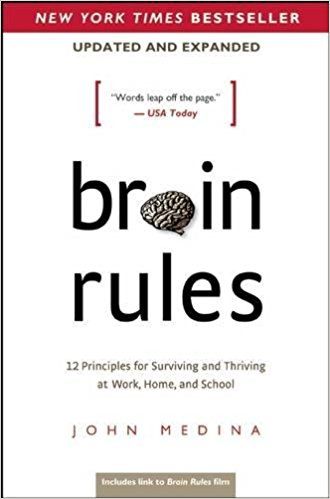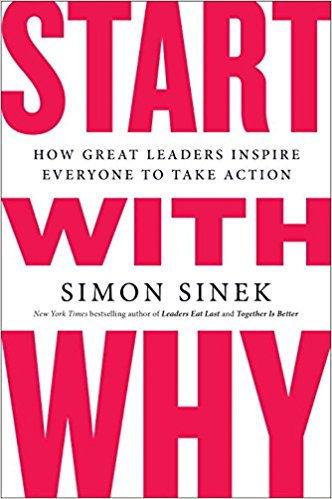THE DECLINE EMPLOYER INVESTMENT
Common sense would dictate that organizations spotting these trends would want to increase internal training efforts to maintain the relevance of their workforce. Some do. Employers like Facebook, Apple, Walmart and the Container Store are just a handful of organizations with notable approaches to internal employee training. Others like General Assembly, Galvanize, and various coding boot-camps are experimenting with new ways to train employees with skills targeted to an emerging need in a specific company.
The last Annual Engagement report published by the U.S. government suggests that 90 percent of leaders believe that building capabilities is a top-ten priority for their organizations; 8 percent track the programs’ return on investment; and, one in four employees get anything out of training.
Internal training programs are increasingly hard to find. One recent study found a 28% decline in employer-paid training across the United States. According to another, Annual Engagement analysis by the U.S. government, 90 percent of leaders believe that building capabilities is a top-ten priority for their organizations; 8 percent track the programs’ return on investment; and, one in four employees get anything out of training.
The lack of training opportunities disproportionately impacts lower-skilled and lower-educated workers, who are the most vulnerable to automation, and those workers who would benefit most from knowing in advance the outcome to which a specific type of training would lead. But make no mistake, lack of upskilling will impact more than just manufacturing. This dilemma will touch every profession from law, healthcare, psychiatry, education — just to name a few.
INVESTING IN THE WRONG SKILLS, WRONG TIME
For most of us, advancing in our lives and careers in a climate where much of what we do is being automated will require different skills — specifically, the capacity for imagination and deep learning. A recent report on the occupations of 2030 showed that 80 percent (8 of 10) top jobs will require creativity, an understanding of systems, and judgment. It is becoming clearer that employees need to start to seek out their own pathways toward training, if not outright invent the job they want to have.
Starting at the turn of the 21st century, the U.S. job market entered a decade of upheaval. As can be seen from this graph, at various times many more jobs disappeared than were created–the worst being just after the 2008 recession. Since 2010, those wild swings have begun to level off, leading to today’s uptick in demand for skilled workers. Image Credit: New America and Bloomberg
Our current systems are not built for just-in-time effectiveness to face adaptive challenges. According to Dr. Anthony Carnevale, head of Georgetown University’s Center for Education and the Workforce, the U.S. spends just $8 billion a year on training, compared to $500 billion on higher education — making the U.S. an education nation, not a training nation.
Adult training programs have had an uneven and often disappointing record of effectiveness. One reason is that they are almost always chasing a problem rather than preventing one which makes them appear out of step and experienced as irrelevant. Another reason is that there is little political will, within the organization or even more broadly across society, that ‘retraining’ is a solution, even as we learn that the ways we’ve tried to retrain workers have not been that successful.
When confronted with this challenge we too often opt for the easy way out or choose challenges with which we are familiar, leaving the hairier problems for the next leadership change. Some of the most promising, innovative approaches to credentialing and adult learning — such as “nanodegrees,” virtual and augmented reality, alternative MBA programs, coding boot camps and MOOCs (Massive Open Online Courses) — attract people already digitally sophisticated or highly educated. In other words, there are so silver bullets on what works at scale to retrain employees for jobs of the future. The challenges to upskilling are especially acute for low- and middle-skilled adult employees — a group that receives little support from employers, and faces many obstacles to advancing, stay up-to-date on market trends, and search for opportunities. They must, therefore, navigate this territory on their own, despite having less financial cushion, scheduling flexibility, core skills, and belief in the payoff of pursuing training in new skills.
THE UNSTABLE MIDDLE CLASS
Volatility in any part of the market hits the low and middle-income the hardest placing them at the highest risk of poverty. In a recent report from the Federal Reserve, researchers found millions of families experiencing significant month-to-month fluctuations in pay. Many of us are already there. Data from the report suggest that 40% of households have no emergency savings and 44% of the adults who responded said they could not pay for a $400 emergency expense without selling something or borrowing money.
As mentioned, support structures (e.g., education, the 9 to 5 workday, and workforce training) that have long held up the economy have not kept pace with the changing nature of work. As employees opt out in greater numbers toward independent work and with increasing turnover in traditional employment, the safety net for many is still built around employer-provided benefits. Workers struggle to find affordable healthcare, start retirement accounts, and many lack disability or unemployment insurance entirely.
A worker saddled with that kind of economic instability has little time to consider self-development. It is not within the realm of possibility to forgo income in order to study. They likely have little savings enabling him or her to invest in starting a small business, undertake an uncertain job search, or invest in a career pivot. Regrettably, taking those kinds of chances is quickly becoming the way to advance one’s career prospects.
MIND THE GAPS: EDUCATION
The World Economic Forum predicts that upwards of 65% of children entering primary school today will eventually work in jobs that do not even exist today. How are schools preparing tomorrow’s adults for a world like this?
44% of the adults in a 2016 survey said they could not pay for a $400 emergency expense without selling something or borrowing money.
We are on a crumbling foundation. A recent study by labor economists found that “one more robot per thousand workers reduces the employment to population ratio by about 0.18–0.34 percentage points and wages by 0.25–0.5 percent.” Despite students’ optimism about their prospects and confidence in their abilities, most employers found recent college graduates poorly prepared for the workforce. About a third of respondents expressed no confidence in training and education evolving quickly enough to match demands by 2026. Some of the bleakest answers came from some of the most respected technology analysts. A primary concern remains about employees’ capacities for applying knowledge in real-world settings, critical thinking, and communication. And those are just a few of the “soft skills” considered increasingly important.
A focus on nurturing unique human skills that artificial intelligence (AI) and machines seem unable to replicate: Many of these experts discussed in their responses the human talents they believe machines and automation may not be able to duplicate, noting that these should be the skills developed and nurtured by education and training programs to prepare people to work successfully alongside AI. In an economy that is getting increasingly dynamic, most schools continue to teach as they always have: with students working by themselves at their desks instead of collaborating on creative projects.
Respondents of the study suggest that workers of the future will learn to deeply cultivate and utilize individual creativity, collaborative activity, abstract and systems thinking, complex communication, and the ability to thrive in diverse environments.
In a 2017 book called “Robot-Proof: Higher Education in the Age of Artificial Intelligence,” Joseph E. Aoun, president of Northeastern University, challenges universities to revamp their entire approach to education. He illustrates a new discipline called “humanics,” which he believes would help students prepare for jobs that will increasingly exist alongside automated machinery. The study of humanics would stress three core skills: data literacy, technological literacy, and human literacy. Aoun also calls for more experiential and applied learning, including regular internships and work experience.
If Aoun is right, how far should schools go? It might be prudent to invest in coding and computer science skills, but since we can’t plan for what change is coming — but we can prepare for change itself. If schools adapt their curriculum to emphasize computer or IT skills, and computers themselves do those jobs within such a short time, won’t those skills be obsolete? Timing and relevance are certainly big concerns. But education needs to last a lifetime, not be targeted toward the half-life of a job or a particular technology. In other words, adult workers should get the same sort of in-depth studies that a youngster receives in elementary school.
If you can’t see yourself doing what you are doing for the rest of our life, you will never advance.
To make such a change really work, those elementary school studies must be truly in depth, and foster a capacity for change and innovation. But in elementary schools, where standardized testing is emphasized, failure is often seen as unacceptable, which discourages thinking outside the box. The current system is designed to “educate people out of their creativity,” says Sir Ken Robinson, author of “Out of Our Minds: Learning to Be Creative” and other books about revolutionizing education. “If you’re not prepared to be wrong,” he said in a 2006 TED Talk, “you’ll never come up with anything original.” This sentiment is echoed by the last carousel craftsmen in America, Art Ritchie, put it “If you can’t see yourself doing what you are doing for the rest of our life, you will never advance.” Surprisingly, some of the most vocal critics of education’s status quo are teachers themselves. Regardless, our schools continue to line desks in neat rows, distributing memorization-based worksheets reinforcing the student as the empty vessel to be filled rather than a whole, creative person with perspective.
MIND THE GAPS: ENTREPRENEURISM
As technology continues its path of creative destruction, of one sort or another, not everyone will need to be an entrepreneur to get ahead. They will, however, need to be entrepreneurial. The tumultuous changes we just described in the economy will require more people to be self-directed, seeking out their own opportunities and charting their own path through them. Reid Hoffman, founder of professional social networking site LinkedIn, calls this needed mindset “the start-up of you.”
To the institutionalization mind of memorized education and organizational conformity American ultra-independence feels like a distant myth, but the pendulum is swinging back. “The whole concept of a 9 to 5 job for life was a historical quirk,” says Susan Lund of McKinsey. “In 1900, 45 percent of people in the United States were self-employed. Today, with the rise of new employment and wealth generation platforms such as Uber, TaskRabbit, and Airbnb, it looks like we’re returning to that.”
The rising percentage of older people in the workforce over the coming decade presents a double challenge: As skills become obsolete with increasing speed, more and more adult workers will need retraining. But most retraining programs still haven’t proven effective.








 Overview
Overview Overview
Overview